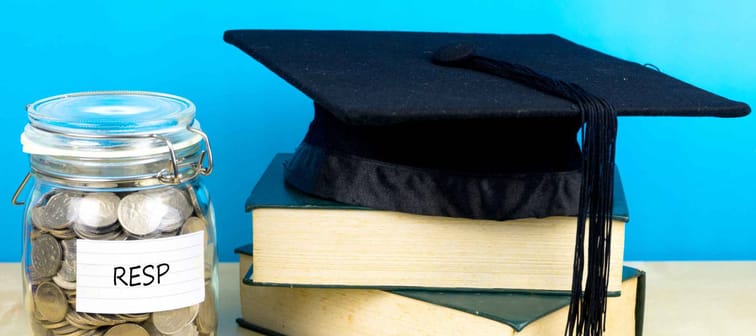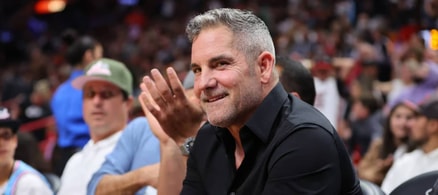What is an RESP?

An RESP is an investment plan that lets people save for post-secondary education. That can mean college, university, apprenticeships or trade schools. While you can set one up for an adult — even yourself, if you want — they’re typically used to save for kids.
A better online investing experience
Easy to use and powerful, Qtrade's online trading platform puts you in full control with tools and resources that help you make well-informed decisions.
Invest NowHow does an RESP work?
Here’s how it works.
The “subscriber” (the parent or guardian) sets up the RESP, usually through a bank or other financial institution, then makes contributions over the years. You can grow your money in the plan through a variety of investment options, including stocks, GICs and mutual funds.
There’s no limit to how much you can contribute per year, but each child can only ever be assigned a maximum of $50,000. Anything above that amount is taxed at 1% per month until you remove it.
When it comes time to pay for school, the subscriber makes withdrawals on behalf of the “beneficiary” (the campus-bound child). The beneficiary can’t make withdrawals on their own, but can use the money you give them to pay for just about anything, including tuition, books, transportation, rent or a meal plan.
Why should I use an RESP?

It's simple. You get free money — rewards from the Government of Canada for supporting higher education.
The Canada Education Savings Grant (CESG) adds 20% to the contributions you make for your children. The grant maxes out at $500 per year, so if you have more than $2,500 on hand, you may want to stagger your investment to rake in as much as possible.
If you don’t have that much ready to go, that’s okay. Any unused grant money is carried forward, though you can't net more than $1,000 in free cash in any one year. The grant lasts until the beneficiary turns 17, and you have to start saving before age 15 to get the last two years.
Lower- and middle-income families can get an even bigger return on their contributions, up to an additional 20% on the first $500 they save.
In addition to the CESG, low-income families can also get the Canada Learning Bond. Your eligibility, and the amount you receive, depends on how many children you have and how much money you make.
You don’t even need to put a dime into your RESP to qualify for the bond; you just need to have one. The government will contribute up to $2,000, starting with up to $500 for the first year and $100 installments for every year the child is eligible until they turn 15.
The other big benefit of RESPs is related to taxation. Like registered retirement savings plans (RRSPs), RESPs are tax shelters: All of your capital gains, dividends and interest are completely safe while your investment grows. However, unlike RRSPs, you can't deduct your contributions from your income tax.
When it's time for the student to use the funds, they’ll only pay income tax on your earnings in the RESP — not the original amounts you invested. And since students are a notoriously low-income demographic, they probably won’t make enough to warrant any income tax at all.
Grow Your Savings Effortlessly with Moka
Automate your savings with every purchase and watch your money multiply. Moka rounds up your transactions and invests the spare change. Start building wealth effortlessly today. Join thousands of Canadians embracing financial freedom with Moka
Sign up nowWhat happens if my kid doesn’t go to school?

First off, the beneficiary has time to change their mind. You can contribute to an RESP for 31 years after it’s opened, and they can be left open for up to 36 years. So if you started one when your child was born, they can still use the funds well into their 30s.
If your child scraps plans for higher education altogether, don’t freak out. You can get your money back.
All of your personal savings can be withdrawn tax-free, though you will lose the interest and the government grants unless certain conditions are met. For example, the RESP must be at least 10 years old, and the beneficiaries have to be over 21. If you tick all the boxes, you’ll get the extra money but be taxed at your regular income tax rate, plus 20%.
Alternatively, the RESP can be transferred tax-free to a sibling’s RESP as long as they’re under 21. Or, you can roll up to $50,000 into your own RRSP, as long as you have the room.
What type of RESP should I get?

Family plans:
These can only be opened by the parents, grandparents or siblings of the beneficiaries. Family plans are great if you have more than one child because a single family plan can be shared among several children.
Individual plans:
These plans only allow for one beneficiary and are ideal for an only child or a beneficiary you’re not directly related to. So, if you have a niece or nephew you’re especially fond of, an individual plan is best.
Group scholarship plans:
These plans allow multiple subscribers to pool their money to invest for their children. Be sure to read the contract carefully if you’re considering a group plan; the private companies that sell them have received a lot of negative press for their sales fees and mandatory contribution schedules.
How to open an RESP

The process itself is easy. Just have your social insurance number, your child’s social insurance number and their birth certificate handy.
You can start an RESP just about anywhere — at a bank, credit union or with your financial planner. Depending on where you go, you may have to pay fees to set up an account, maintain it or make investments.
If you’re new to investing, or you have your hands full managing your own accounts, consider opening an RESP with a robo-advisor. After choosing your level of risk, a sophisticated algorithm will design a portfolio for you and automatically make adjustments as the market shifts.
The sooner you get started, the more time your investment has to grow. Your future scholar will thank you for it.
Sponsored
Trade Smarter, Today
With CIBC Investor's Edge, kick-start your portfolio with 100 free trades and up to $4,500 cash back.







